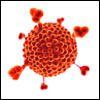|
|
|
29 May 2015 |
|
|

Photo Credit: UDE_Frank Preuβ |
LCGC TV: Principles of In-Tube Extraction for Headspace Sampling of Beer
Torsten C. Schmidt from the University Duisburg-Essen in Germany recently developed an in-tube extraction (ITEX) method for headspace sampling of beer prior to gas chromatography–mass spectrometry (GC–MS). In this video he discusses the principles of the technique and its advantages over other methods. |
|
| Plug & play elution into MS |
| The CAMAG TLC-MS Interface allows for rapid and contamination-free elution of TLC/HPTLC zones with online transfer to any given HPLC-MS system. Depending on the MS, substances can be identified within a minute.
Read More |
|
|
|
| US EPA Method TO–15 – High-throughput air analysis using GC–TOF MS |
| This Application Note shows that the cost-effective combination of cryogen-free automation and rapid GC–TOF MS analysis delivers robust, high-throughput determination of priority hazardous air pollutants in accordance with US EPA Method TO-15. As well as allowing up to US$200,000 additional revenue to be generated per year per system, the enhanced analytical performance of the new system opens up fresh application opportunities.
Read More |
|
|

Photo Credit: Science Photo Library - PASIEKA/Getty Images |
Q&A: Novel Strategies for Biopharmaceutical Purification
José Paulo Mota from the Faculty of Science and Engineering (FCT-UNL) of Universidade Nova de Lisboa and the Institute of Experimental and Technological Biology (IBET), Portugal, has been working on the development of chromatographic techniques to speed up the purification of biopharmaceuticals, specifically adenoviruses. |
|

Photo Credit: Foodcollection RF/Getty Images |
News: Analyzing Shipwrecked Beer from 1840s Using GC–MS
Beer from a 1840s shipwreck in the Baltic Sea has been analyzed by a team of scientists at the VTT Technical Research Centre in Finland. Using a variety of chromatography techniques — including gas chromatography coupled to mass spectrometry (GC–MS) and high-performance anion-exchange chromatography (HPAEC) coupled to MS — the team compared the beer with modern-day varieties and found they were not too dissimilar. |
|
| Gingerol purification with Centrifugal Partition Chromatography SCPC-250 |
| Gingerol, a naturally occurring plant phenol, is one of the major components of ginger. It is responsible of the characteristic taste of ginger. Centrifugal Partition Chromatography (CPC) also known as Counter Current Chromatography (CCC) is a preparative, pilot and industrial liquid purification technique that does not require traditional solid supports. CPC was used to purify few mg of gingerol from crude extract.
Read More |
|
|
|
|
|
Upcoming Webcasts
Editors’ Series: Hi-tech, Low-tech and No-tech: Preparing Samples for LC and LC–MS of Small Molecule Drugs and Pesticides
Thursday, May 28, 2015
10 am PDT/ 12 pm CDT/ 1 pm EDT
Sign Up Now >>
Pesticide Residue Analysis: Tips and Tricks for the Whole Workflow: Maximizing Analysis Efficiency through New GC–MS Approaches
Wednesday, June 17, 2015
8:00 am PDT/ 11:00 am EDT/ 4:00 pm BST/ 5:00 pm CEST
Sign Up Now >>
A Faster, More Sensitive Sample Preparation Solution for Bioanalytical Samples
Tuesday, June 23, 2015
8:00 am PDT/ 10:00 am CDT/ 11:00 am EDT
Sign Up Now >>
|

|
|
|
 |
|
|
|